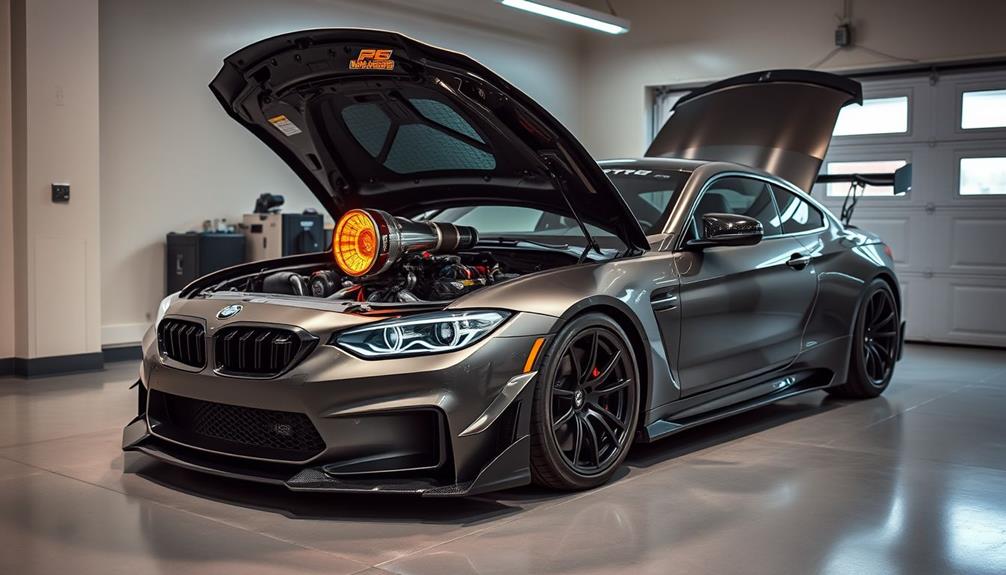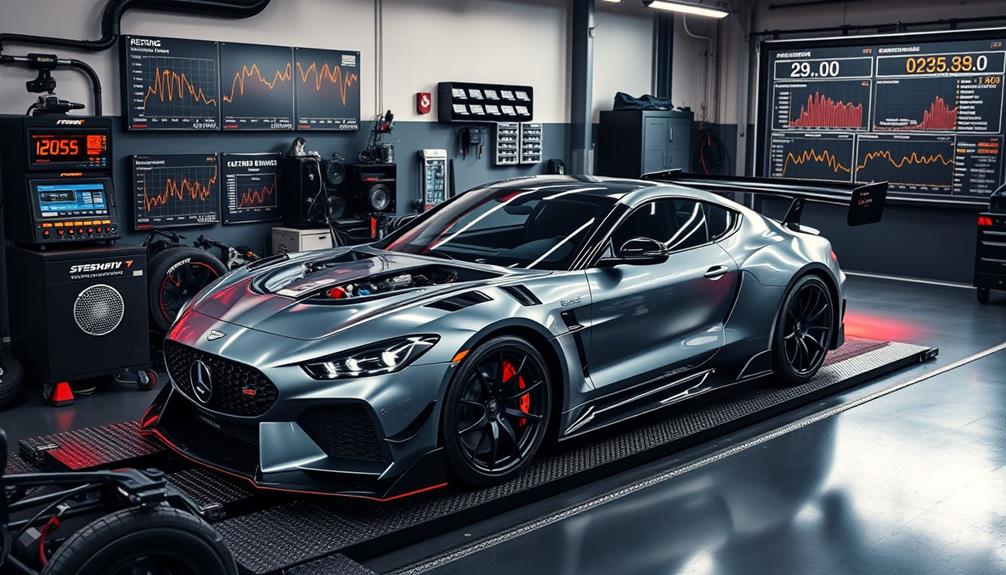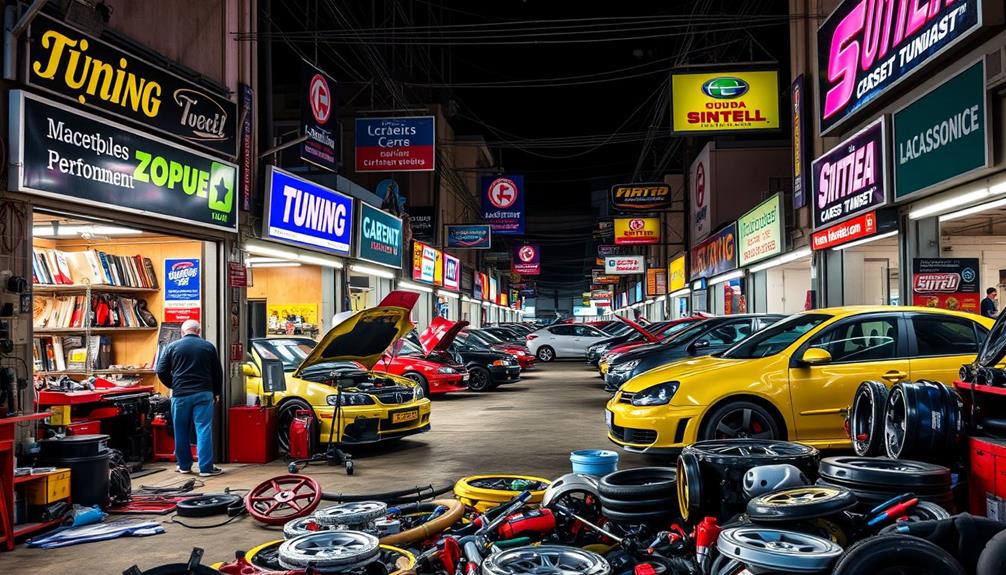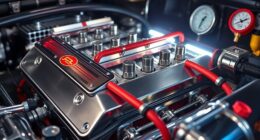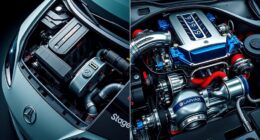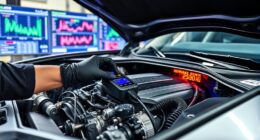Stage 2 car tuning takes your vehicle's performance to new heights, focusing on maximizing horsepower and torque. You'll upgrade key components like the air intake system, performance exhaust, and ECU remapping. These modifications enhance airflow and optimize fuel delivery, leading to significant power gains—often around 40 to 90 horsepower. With supporting upgrades, such as brakes and suspension, your car will handle better at higher speeds. It's vital to complete Stage 1 tuning first, as it lays the groundwork for these advancements. Stick around, and you'll discover more about the essential components and benefits of this exciting tuning stage.
Key Takeaways
- Stage 2 car tuning maximizes horsepower and torque through hardware and software upgrades, enhancing overall vehicle performance.
- Key modifications include upgraded air intake systems, performance exhausts, intercoolers, and ECU remapping for optimal fuel delivery.
- Typical performance gains can reach 40-90 horsepower, depending on the vehicle and existing modifications.
- Supporting upgrades like brakes, tyres, and suspension are crucial for managing increased power and improving handling.
- Regular maintenance post-tuning is essential to ensure reliability and optimal performance of the enhanced vehicle.
Overview of Stage 2 Tuning
When you plunge into Stage 2 tuning, you're stepping up your vehicle's performance game greatly. This tuning level focuses on maximizing horsepower and torque output through a strategic combination of hardware and software upgrades.
One of the standout modifications is the upgraded air intake system, which allows for improved airflow. This boost in airflow leads to more efficient fuel combustion, translating to noticeable gains in both horsepower and torque.
Additionally, a high-performance exhaust system plays an essential role. By reducing backpressure, it enhances throttle response and facilitates better expulsion of exhaust gases, markedly improving overall engine performance.
To truly release your engine's potential, proper ECU remapping is essential. This process calibrates engine parameters to optimize fuel delivery and ignition timing, ensuring smoother power delivery and increased responsiveness.
Key Modifications for Stage 2
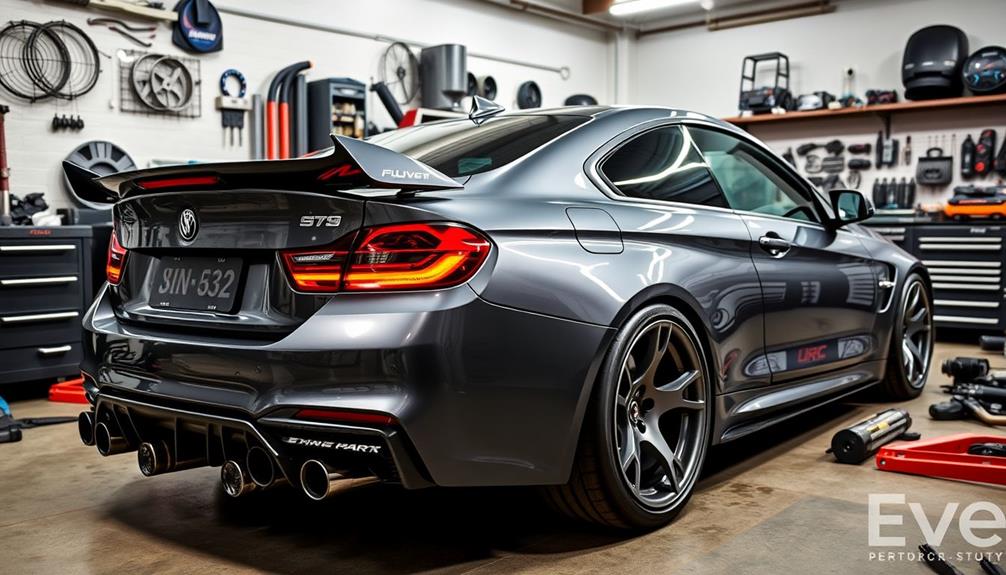
Stage 2 car tuning often includes several key modifications that greatly enhance your vehicle's performance. By upgrading essential components, you'll achieve better efficiency and power delivery.
Here are three critical modifications to take into account:
- Air Intake System: Switching to a high-performance cold air intake considerably improves airflow to the engine, enhancing combustion efficiency.
- Performance Exhaust System: This upgrade reduces backpressure, allowing for more efficient expulsion of exhaust gases, which leads to improved throttle response.
- Upgraded Intercooler: For turbocharged vehicles, a better intercooler cools the compressed air before it enters the engine, reducing intake temperatures and increasing air density.
In addition to these, ECU remapping is crucial. This process optimizes fuel delivery, ignition timing, and turbo settings, resulting in smoother power delivery.
Supporting hardware upgrades, such as enhanced fuel systems and suspension improvements, guarantee your vehicle can handle increased power while maintaining stability during performance driving.
Performance Benefits of Stage 2
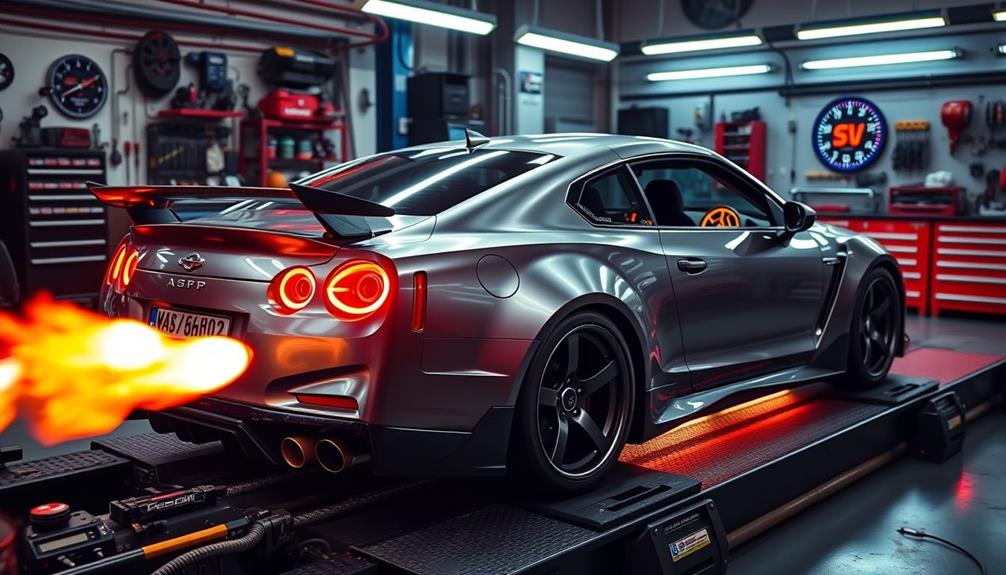
After implementing key modifications in Stage 2, you'll notice a significant boost in performance.
Stage 2 upgrades typically enhance your vehicle's horsepower by around 40 bhp, which drastically improves acceleration and overall driving dynamics compared to Stage 1.
One of the first changes you'll experience is the increased airflow from a high-performance cold air intake, leading to better fuel delivery and notable torque gains.
Installing a performance exhaust system reduces backpressure, giving you quicker throttle response and an aggressive exhaust note that enhances your driving experience.
If you've got a turbocharged vehicle, incorporating an upgraded intercooler is essential; it lowers intake temperatures, ensuring your engine runs efficiently, even during high-demand conditions.
Requirements for Successful Tuning
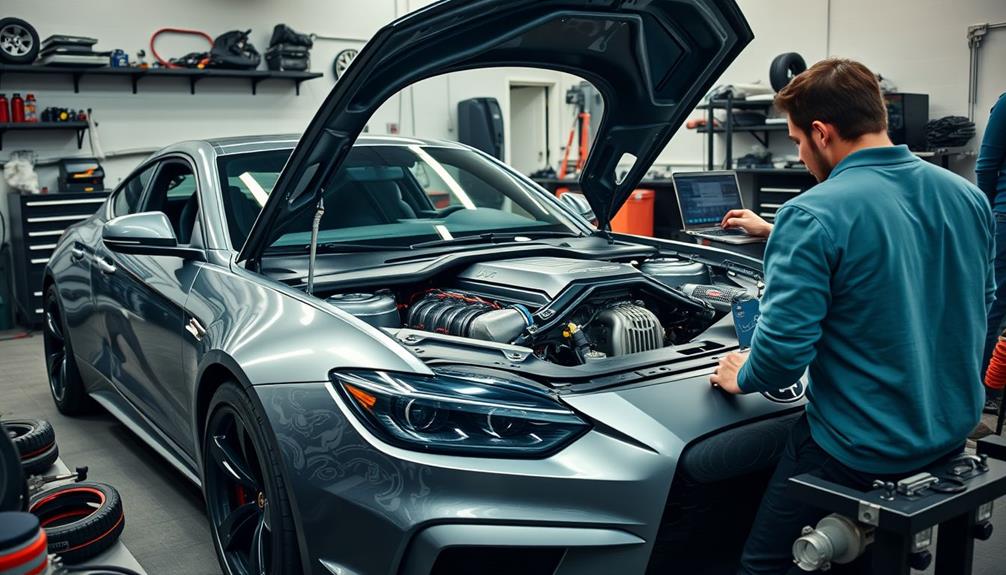
Successful Stage 2 tuning typically requires a combination of key modifications to guarantee peak performance. To maximize the benefits of your Stage 2 tune, you'll need to focus on several important upgrades.
- Upgraded Exhaust System: This enhances airflow and reduces backpressure, essential for releasing horsepower gains.
- Cold Air Intake: A high-performance cold air intake increases the air supply to the engine, guaranteeing efficient fuel combustion and improved power output.
- Engine Management Software: Custom ECU remapping is critical for optimizing fuel delivery and ignition timing, allowing your vehicle to fully utilize its new hardware.
Additionally, consider upgrading your fuel system with larger fuel injectors and a more powerful fuel pump to meet the demands of the enhanced engine performance.
While not mandatory, performance upgrades to your suspension can greatly improve handling and stability, especially when experiencing the increased power from Stage 2 tuning.
Importance of Stage 1 Tuning
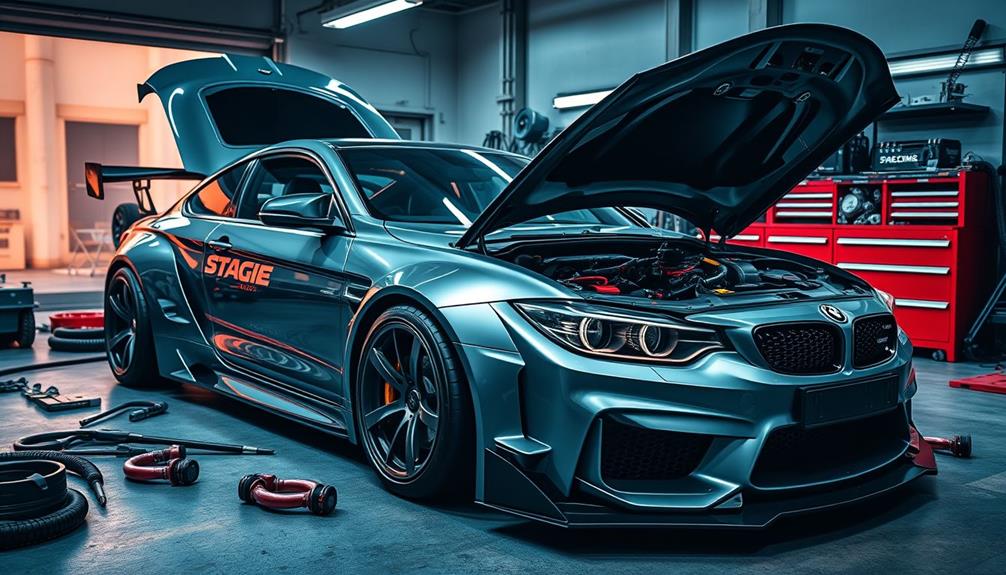
Stage 1 tuning sets the groundwork for any performance enhancements you want to make, optimizing your engine management system for better output.
By calibrating your vehicle within safety limits, you guarantee engine longevity while paving the way for future upgrades.
Skipping this step can lead to compatibility issues and potential damage, so it's essential to start here for a smoother tuning journey.
Foundation for Performance Enhancements
Establishing a solid foundation through Stage 1 tuning is essential for releasing your vehicle's full performance potential. This initial phase sets the groundwork for your future upgrades and guarantees your engine management system is correctly calibrated for peak performance.
By starting with Stage 1, you pave the way for seamless Stage 2 tuning.
Here are three key benefits of Stage 1 tuning:
- Smoother Shift: Optimizing fuel delivery and ignition timing during Stage 1 allows for a smoother upgrade process to Stage 2, minimizing the risk of engine damage.
- Basic Modifications: Implementing ECU remapping, intake upgrades, and exhaust improvements during Stage 1 creates a strong base for advanced performance enhancements.
- Avoiding Compatibility Issues: Skipping Stage 1 can lead to compatibility issues with your upgraded parts in Stage 2, potentially reducing performance gains and increasing the risk of engine failure.
For peak results, completing Stage 1 is vital. This sequential approach guarantees that all modifications work harmoniously together, ultimately releasing your vehicle's true potential for enhanced performance.
Calibration for Engine Safety
Calibration for engine safety is essential for guaranteeing your vehicle can handle performance upgrades without compromising reliability.
Before diving into Stage 2 tuning, you need to optimize your engine management system through Stage 1 tuning. This process fine-tunes your ECU settings, allowing your vehicle to maximize performance while staying within manufacturer safety limits.
By implementing basic upgrades during Stage 1, like remapping and simple hardware adjustments, your engine becomes better equipped to handle the increased power and torque that Stage 2 modifications bring.
Skipping Stage 1 can lead to compatibility issues with your stock engine software, which may result in poor performance and even mechanical failures down the line.
Following a sequential tuning process is vital. It guarantees that each modification harmonizes with the others, thereby enhancing overall vehicle reliability.
Stage 1 tuning lays a solid foundation, allowing you to enjoy the benefits of Stage 2 tuning without risking your engine's health.
Prioritizing calibration for engine safety means you're not just chasing performance; you're also investing in the longevity and dependability of your vehicle.
Compatibility With Upgrades Required
A solid foundation is essential for guaranteeing your vehicle's upgrades work seamlessly together. That's where Stage 1 tuning comes into play. By properly calibrating your engine management system, Stage 1 tuning guarantees compatibility with upgrades, setting the stage for effective Stage 2 tuning.
Skipping this critical step can lead to compatibility issues, potentially damaging your engine.
Here are three reasons why Stage 1 tuning is important:
- Optimized Performance: Stage 1 modifications, like ECU remapping, enhance your vehicle's performance without exceeding manufacturer safety limits.
- Reliable Integration: Proper sequencing from Stage 1 to Stage 2 allows for smooth integration of upgraded parts, such as exhaust systems and intakes.
- Maximized Gains: By establishing a solid foundation, you can fully realize the performance gains that Stage 2 tuning promises.
Common Misconceptions About Stage 2
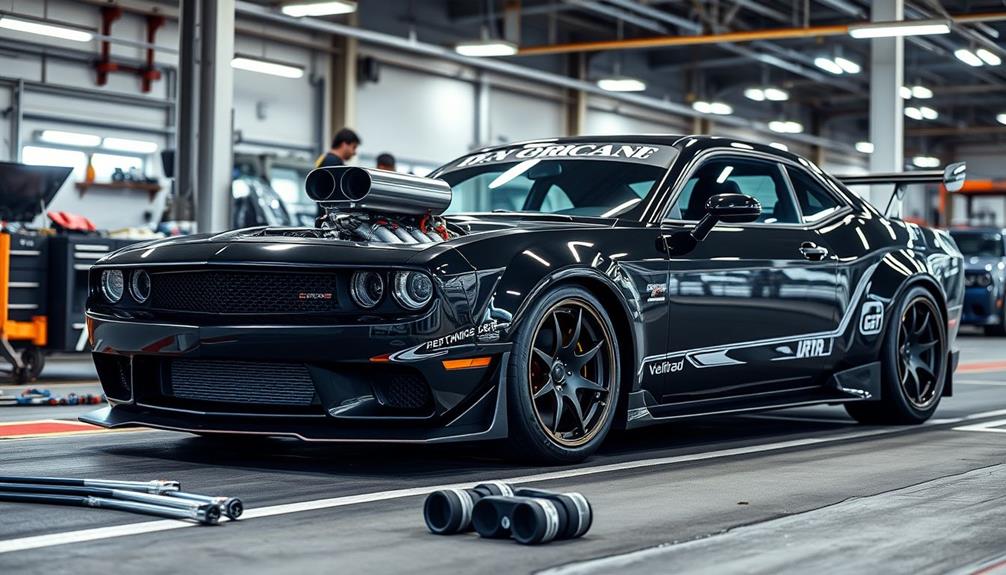
When you're considering Stage 2 tuning, it's easy to get caught up in misconceptions about what it entails.
You might think it only requires software tweaks or that the performance gains are guaranteed, but the reality is much more complex.
Understanding the necessary modifications and realistic performance expectations can save you from costly surprises down the road.
Performance Expectations Vs. Reality
Stage 2 car tuning often comes with heightened expectations, but reality can differ considerably from what enthusiasts anticipate. Many expect a dramatic power increase of 40-90 horsepower, but actual gains depend on your vehicle make and the modifications already in place.
Here are a few key points to keep in mind:
- Engine Management: Stage 2 tuning typically requires prior upgrades from Stage 1 for proper engine management calibration. Skipping this step can lead to issues.
- Throttle Response: While you'll see improved throttle response and acceleration, these results are also influenced by supporting upgrades like brakes and suspension.
- Engine Efficiency: Stage 2 tuning optimizes not just power, but also engine efficiency and drivability, making it suitable for both daily driving and spirited performance.
Understanding these realities helps you set realistic performance expectations.
Tailored tuning solutions are essential for maximizing your vehicle's potential, ensuring you achieve the best results from your Stage 2 tuning experience.
Modifications Required Misunderstandings
Many enthusiasts mistakenly believe that achieving Stage 2 tuning is as simple as adding a few aftermarket parts. However, it's important to recognize that thorough modifications are required to guarantee peak performance. For instance, while a performance exhaust or cold air intake can help, they're just parts of the larger equation. You'll need additional upgrades like intercoolers and custom engine management software to truly benefit from Stage 2 tuning.
Here's a quick overview of common misconceptions:
| Misconception | Reality |
|---|---|
| Stage 2 doesn't require Stage 1 | Stage 1 mods are critical for compatibility |
| Only a few parts are needed | Multiple interconnected upgrades are necessary |
| Power increases are guaranteed | Proper tuning and supporting modifications are required |
Moreover, you can't ignore that the modifications required can vary greatly depending on your vehicle make and model. Finally, higher performance setups often demand increased maintenance. Regular checks are important to guarantee reliability and longevity, so be prepared to invest time and resources into your tuning journey.
Supporting Hardware Upgrades

For your car's performance to match its newfound power after Stage 2 tuning, supporting hardware upgrades are essential. Without these upgrades, you might struggle to handle the increased torque levels and overall driving performance.
Here are three key upgrades to take into account:
- High-performance brakes: These enhance stopping power, guaranteeing you can handle the speeds and power output your car now delivers.
- Upgraded tyres: Better grip and handling are critical. Upgraded tyres help you effectively translate that extra torque to the road, allowing for improved acceleration and cornering.
- Stronger aftermarket clutch: To prevent slippage during aggressive driving, a stronger clutch is necessary. This upgrade guarantees your transmission can handle the increased torque levels.
Additionally, think about enhanced suspension components like coilovers or upgraded sway bars, which improve handling and stability.
A limited-slip differential (LSD) can also optimize power distribution to the wheels, providing better traction and control in various driving conditions.
Maintenance After Tuning
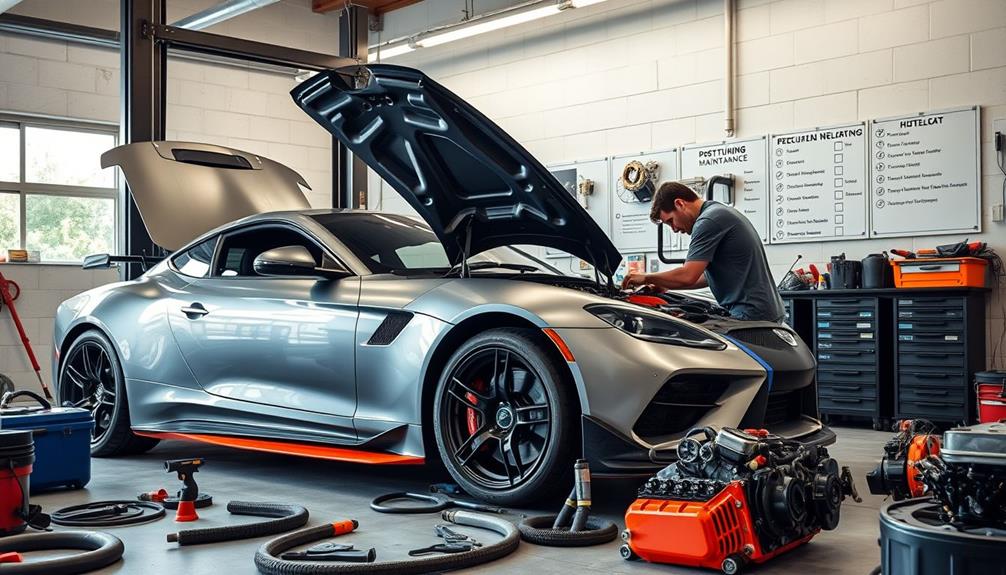
After investing in supporting hardware upgrades, keeping up with maintenance is key to ensuring your vehicle continues to perform at its best.
Regular maintenance is vital after Stage 2 tuning, as upgraded components like the exhaust system and intercooler need to function efficiently to prevent potential engine damage. You should plan to perform oil changes more frequently—typically every 3,000 to 5,000 miles—due to the increased strain on your engine from higher performance outputs.
Monitoring engine temperatures becomes essential after tuning. Higher power levels can lead to overheating, so using aftermarket temperature gauges will help you keep track and avoid damage.
Additionally, don't neglect your upgraded brakes and tires; they may require more frequent inspections and replacements to maintain safety and performance standards post-tuning.
Frequently Asked Questions
What Does Stage 2 Tune Do?
A Stage 2 tune greatly boosts your vehicle's performance by enhancing airflow, optimizing fuel delivery, and increasing horsepower. You'll enjoy improved acceleration and responsiveness, making your driving experience more thrilling while still maintaining reliability.
What Happens When You Stage 2 a Car?
When you stage 2 a car, you'll experience significant power gains. You'll upgrade the intake and exhaust systems, remap the ECU, and possibly enhance the fuel system, resulting in improved performance and efficiency.
How Much HP Does a Stage 2 Tune Increase?
When you release a Stage 2 tune, expect a power surge—typically 40 to 100 HP more! With the right modifications, your ride transforms, delivering exhilarating torque and responsiveness, making every drive feel like an adventure.
What Is the Difference Between Stage 1 and Stage 2 Tunes?
The difference between Stage 1 and Stage 2 tunes lies in complexity. Stage 1 focuses on software tweaks for moderate gains, while Stage 2 incorporates significant hardware upgrades, providing much higher power increases and performance enhancements.
Conclusion
In summary, Stage 2 tuning elevates your vehicle's performance, enhances your driving experience, and reveals its true potential. By focusing on key modifications, supporting hardware upgrades, and proper maintenance, you're not just boosting power; you're optimizing efficiency and ensuring longevity. Remember, starting with Stage 1 lays the foundation for a successful upgrade. So, embrace the thrill, enjoy the ride, and take your vehicle to the next level with confidence and excitement! The history of car tuning dates back to the early 20th century, when enthusiasts began modifying their vehicles for improved performance. Today, Stage 2 tuning represents a modern approach to enhancing your car’s capabilities, taking advantage of advanced technology and engineering. With the right combination of upgrades and maintenance, you can create a customized driving experience that reflects your unique style and preferences. So, whether you’re a seasoned enthusiast or new to the world of car tuning, Stage 2 is the perfect opportunity to unlock your vehicle’s full potential.
